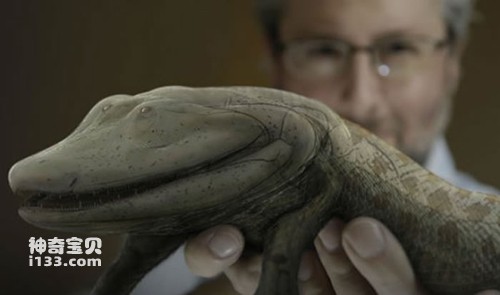According to EurekAlert!: A study explores the genetic basis for the origin of paired appendages in vertebrate evolution. Jawless vertebrates possess two sets of appendages, such as pectoral and ventral fins, while living jawless fish, such as lampreys and hagfish, lack paired fins. However, the fossil record preserves traces of now-extinct jawless fish that had pectoral fins but no pelvic fins.
To explore the origin of paired appendages, Neil Shubin and colleagues compared the expression patterns of Tbx5 and Tbx4/5 genes involved in the formation of thoracic appendages in a group of vertebrates. The authors found that Tbx4/5 gene expression is restricted to the embryonic heart of jawless vertebrates, whereas in jawed vertebrates Tbx5 expression extends posteriorly beyond the heart and gill regions. Molecular analysis suggested that a gene expression regulatory element called an enhancer located near the Tbx5 gene formed the basis for the observed expression pattern. When the enhancer, whose sequence is conserved among jawed vertebrates, was engineered to drive expression of the tbx5 gene in a jawed vertebrate, the intervention restored the mutant fish's Development of pectoral fin buds in zebrafish mutants called heartstrings in jawed vertebrates that lack tbx5 expression and pectoral fins.
According to the authors, together with the fossil record from the Paleozoic era, these findings suggest that changes in Tbx5 expression and regulatory patterns may be a key to the origin of paired appendages early in the genetic history of vertebrates.

New study explores genetic basis for origin of paired appendages in vertebrate evolution
animal tags: lamprey
We created this article in conjunction with AI technology, then made sure it was fact-checked and edited by a Animals Top editor.